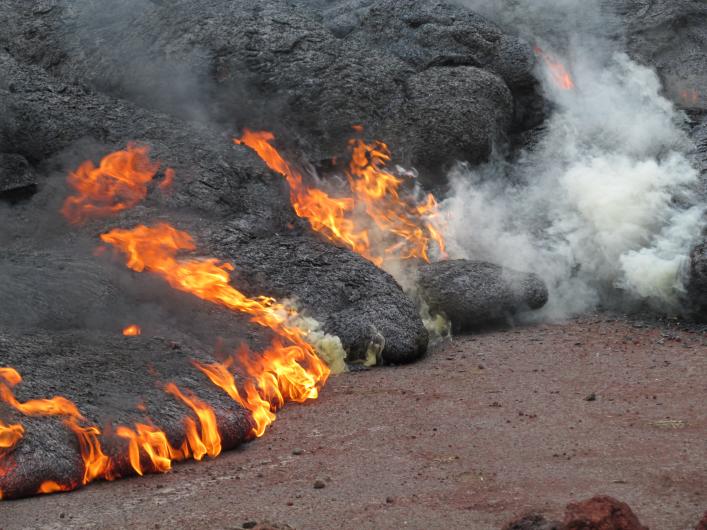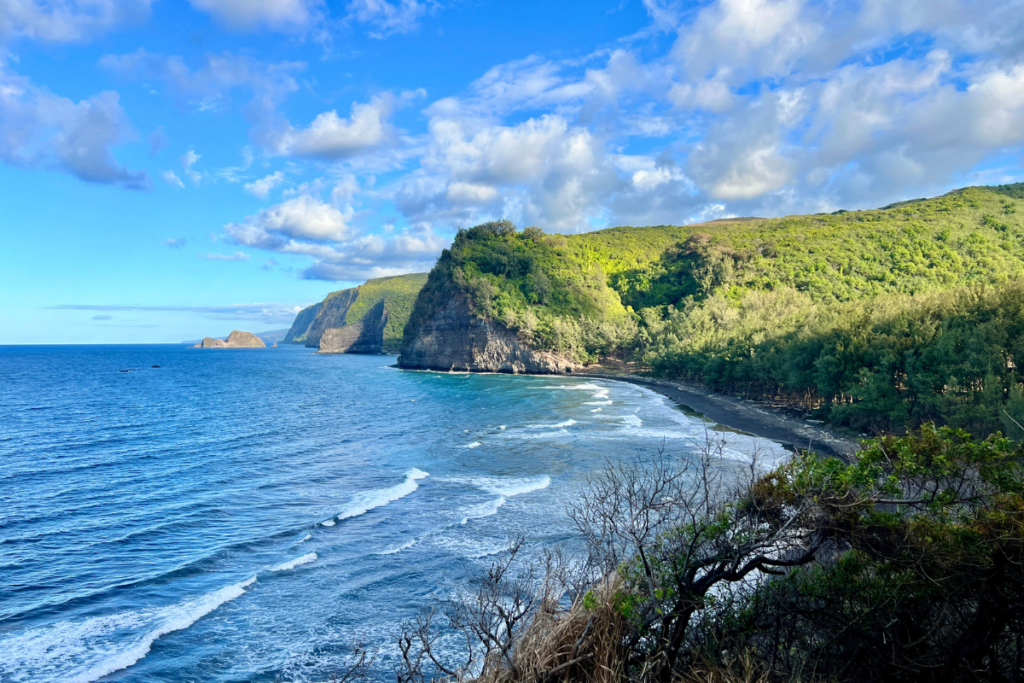Kilauea volcano lava flow claims first house on Hawaii Island

A lava flow from Kilauea volcano that has slowly advanced toward the Hawaii Island town of Pahoa over the last three months claimed its first residential home on Monday.
A breakout upslope of the flow’s leading edge crossed Apaa Street near Pahoa Cemetery and into a private property Sunday morning, igniting the house around 11:55 a.m. Monday. The property’s residents had previously been evacuated, and the structure was reportedly empty at the time.
According to a report yesterday from local NBC-affiliate TV station Hawaii News Now, the house collapsed and was completely destroyed around 12:45 p.m. The 1,100 square foot home was just across Apaa Street from the Pahoa Transfer Station. A barn/garage remained standing as of this morning.
Hawaii News Now reported the family who had leased the house for the last eight years evacuated their belongings and several horses from the premises several weeks ago, but the property owner was on site when the lava reached the house. The news outlet also reported Monday afternoon that the breakout that claimed the house was about 1,200 feet from the nearest residential structure.

Photo: Hawaii County Civil Defense
Hawaii County Civil Defense reports that emergency personnel responded to the house’s destruction by the lava and that the flow does not currently pose an immediate threat to other properties in the area.
Despite several destructive breakouts behind the flow’s leading edge, the lava has not made forward progress since October 30.
As of Monday morning the now stagnant former leading edge of the flow remained in a residential area about 510 feet from Pahoa Village Road—a small, two-lane outlet and one of two critical access routes connecting the eastern-most tip of Hawaii Island to the rest of the island—according to the Hawaiian Volcanoes Observatory (HVO). The closest active edge of the lava flow was about 1,500 feet from Pahoa Village Road as of this morning. Construction is currently underway on alternate emergency access routes, should the magma cross Pahoa Village Road or Highway 130, the region’s only other outlet.
Pahoa Village Road between Apaa Street and Post Office Road is currently closed with access limited to area residents only. Because of the recent variability in the flow’s speed, Hawaiian Volcano Observatory officials are not offering a timeline for when the lava might reach Pahoa Village Road.
Since HAWAII Magazine last reported on the flow two weeks ago, lava has inundated Pahoa Cemetery and crossed a small road, Apaa Street, in Pahoa town as it advanced in the direction of residential properties and critical access roads.
On Monday, one breakout behind the stalled front crossed Apaa Street in a new location and another progressed toward the town’s waste management center, Pahoa Transfer Station. As of Monday morning, both breakouts were moving forward at speeds between 10 and 15 feet per hour. On Tuesday morning at around 8:30 a.m., lava was about 66 feet from the gate of the Pahoa Transfer Station. A third area of lava flow activity continues downslope of Pahoa Cemetery, though HVO describes its activity as “sluggish.”

Photo: Hawaiian Volcano Observatory.
An evacuation advisory for residents downslope of the flow has been issued. Hawaii County Civil Defense reports that public safety personnel will keep area residents informed of the flow’s status and advancement.
Situated 20-miles southeast of Hilo, Pahoa is part of Hawaii Island’s Puna district, which encompasses the island’s eastern-most tip. The current flow, which began on June 27, is part of a long-running eruption from the Puu Oo volcanic cone, on the eastern flank of Kilauea volcano.
Eruptions in the area have been continuous since 1983. According to USGS statistics, lava from the three-decade plus eruption had already destroyed 214 structures and claimed more than eight miles of highway, before Monday’s news.
HawaiiMagazine.com will continue to monitor news from Hawaiian Volcano Observatory and Hawaii County Civil Defense on the lava flow. We will update this story as necessary.
You can also follow the USGS Hawaiian Volcano Observatory as they monitor the situation.


